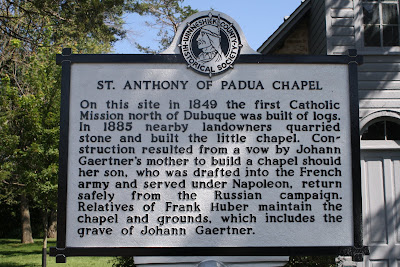There are trips that you take where you're in a hurry to get somewhere—most of them, to be honest—and then there are those trips where you enjoy the journey and stop to see whatever might interest you along the way. Ironic to throw adherence to a schedule to the wind when we were going to a museum dedicated to timepieces...
 |
| Cedar Rock |
We stayed the night in Decorah, a lovely Norwegian town, at the Hotel Winneshiek and had a great dinner out-of-doors at a place our friend Sonya told us about, McCaffrey's Dolce Vita.
 |
| Parade of Nations Clock |
Each docent has a slightly different spin on the Bily's story—one told me that they created the clocks for the pleasure of their disabled brother and that's why so many of them sat on the floor, so that he could enjoy them from his wheelchair. Another docent told me their love of their sister was their motivation.
 |
| Bily Brothers tools and carvings |
 |
| Pioneer History Clock |
 |
| Galileo: a detail on the Parade of Nations clock |
I especially loved that they put so many hours into the research for their clocks: upstairs in the museum is a quirky collection of Bily memorabilia, including their books. They had quite a wide-ranging library for men whose education ended in the fifth grade, and they used those books and daily newspapers to research the background for their clocks.
Down the street from the museum, Spillville's Catholic church has an incredible graveyard—instead of headstones, the graves are marked by metal crosses. I'm assuming this is a Czech tradition. During the 1800s, most of Spillville's residents spoke Czech, which is part of why Dvorak chose to spend a summer there. The church itself has the pipe organ that Dvorak played when he lived there.
In addition to clocks, the Bily Brothers carved two "models" which were each about four feet by two feet carvings of churches. One of them was the Little Brown Church in Nashua, Iowa, which is 40 miles away from Spillville. Because the brothers never traveled farther than 35 miles from home, they carved it from the image on a postcard! The other model was "The Smallest Church in the World," and on our way home we passed a sign for it and couldn't resist turning off to visit. The church and the clocks were such interesting examples of what (quirky) people with a passion choose to do with their time and/or money.
 |
| Interior of Smallest Church: Note the star-painted ceiling. |













1 comment:
I am an Iowa native and I think this state has so much to offer. Thanks for sharing this trip.
Karen L.
Post a Comment